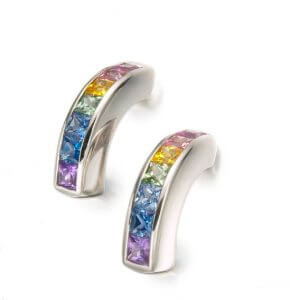How Do I Judge A Good Sapphire?
The birthstone for September is sapphire. Most people think of a sapphire as a blue stone which of course is correct, but it is only part of the story. The words sapphire and blue are almost synonymous, but sapphire is available in just about every colour of the rainbow. They have been known since Biblical times and enjoy the spotlight today as a good alternative to diamond for an engagement ring.

What are sapphires?
Sapphires are a type of mineral called corundum that ranks 9 on the Mohs scale for hardness, only second to diamond which has a hardness of 10. Corundum is aluminium oxide and crystallises with other elements which give it different colours. Blue sapphires owe their colour to the presence of iron whereas the colour in purple sapphires is due to chromium.

They are found in many countries throughout Asia, America and Africa. Each source may have its own characteristic. For example, sapphires from Sri Lanka are frequently a pastel shade of blue and the locally cut gems tend to be deep.

For centuries it has been considered an acceptable, time-honoured, practice to heat stones to improve their colour. The colour change is permanent and difficult to discern outside a laboratory. For a premium it is possible to purchase an unheated stone. Such stones are very rare.
A rich velvety blue sapphire usually commands the highest price, but high prices are also known for pinks. Your choice of colour may be different from someone else’s. The ideal colour is not so dark as to be almost black, or indiscernible at arm’s length. Larger stones are rarer, and this will add to their value. As with diamonds, inclusions will spoil the look of the stone and affect their value accordingly. Make sure you view a sapphire in different lights and in different directions. Sapphires, characteristically, sometimes feature directional colour or a ‘window’ – which means that you can see through them. A well-cut stone projects the most colour through the crown of the stone by capturing light and reflecting it internally.
